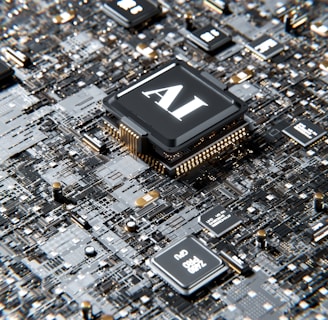Understanding the Differences: CPU vs GPU and GPU vs LPU
This blog compares Central Processing Unit (CPU) with Graphics Processing Unit (GPU) and Graphics Processing Unit (GPU) with Language Processing Unit (LPU)


CPU vs GPU
The Central Processing Unit (CPU) and Graphics Processing Unit (GPU) are the two main processing units of a computer. The CPU, often referred to as the brain of the computer, handles all the main functions, whereas the GPU is a specialized component that excels at running many smaller tasks at once.
Key Differences
Cores: CPUs have several cores, while GPUs have hundreds of cores. This means that while CPUs are designed to handle a few complex tasks at a time, GPUs are designed to handle hundreds of simpler tasks simultaneously.
Speed: The speed of CPU is less than GPU’s speed. This means that while CPUs are designed for tasks that require high computational power, GPUs are designed for tasks that require high throughput.
Memory: CPU consumes or needs more memory than GPU. This means that while CPUs are designed to handle tasks that require large amounts of memory, GPUs are designed to handle tasks that require less memory but more computational power.
Processing: CPU is suitable for serial instruction processing, while GPU is suitable for parallel instruction processing. This means that while CPUs are designed to handle tasks that require sequential processing, GPUs are designed to handle tasks that can be processed in parallel.
Latency vs Throughput: CPU emphasis on low latency, while GPU emphasis on high throughput. This means that while CPUs are designed to minimize the time it takes to complete a single task, GPUs are designed to maximize the number of tasks that can be completed in a given amount of time.
GPU vs LPU
The Graphics Processing Unit (GPU) and Language Processing Unit (LPU) are both powerful processing units, but they differ significantly in their design, focus, and ideal applications.
Key Differences
Design: GPUs are highly versatile processors initially designed for handling graphics calculations. LPUs, however, are specifically designed to excel at handling the intricacies of natural language. This means that while GPUs are designed to handle a wide range of tasks, LPUs are designed to handle tasks that involve understanding and generating human language.
Processing: GPUs are characterized by large numbers of cores capable of performing calculations simultaneously (parallel processing). LPUs process tasks in sequence (sequential processing), making them highly effective for language comprehension and generation. This means that while GPUs are designed to handle tasks that can be processed in parallel, LPUs are designed to handle tasks that require sequential processing.
Applications: GPU applications have expanded to include video editing, scientific computing, machine learning, and even specific general-purpose AI tasks. LPUs are tailored to the specific demands of language tasks, such as machine translation, sentiment analysis, and chatbot development. This means that while GPUs are versatile and can be used in a wide range of applications, LPUs are specialized and are particularly useful in tasks that involve language processing.
In conclusion, while CPUs, GPUs, and LPUs all have their unique strengths and applications, understanding their differences is crucial in making informed decisions in various technological fields.
